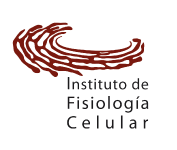Tomosyn functions as a PKC-regulated fusion clamp in mast cell degranulation
Madera-Salcedo, I. K., Danelli, L., Tiwari, N., Dema, B., Pacreau, E., Vibhushan, S., ? Blank, U. (2018). Tomosyn functions as a PKC?-regulated fusion clamp in mast cell degranulation. Science Signaling, 11(537), eaan4350. doi:10.1126/scisignal.aan4350
Soluble -ethylmaleimide-sensitive factor attachment protein receptor (SNARE) family proteins mediate membrane fusion critical for vesicular transport and cellular secretion. Mast cells rely on SNARE-mediated membrane fusion for degranulation stimulated by crosslinking of immunoglobulin E (IgE) bound to the Fcε receptor (FcεRI). We investigated the mechanisms downstream of receptor activation that control degranulation. We found that the SNARE binding protein tomosyn-1 (also known as STXBP5) inhibited FcεRI-stimulated degranulation of mast cells. After mast cell activation, tomosyn-1 was phosphorylated on serine and threonine residues, dissociated from the SNARE protein syntaxin 4 (STX4), and associated with STX3. We identified PKCδ as the major kinase required for tomosyn-1 threonine phosphorylation and for regulation of the interaction with STXs. Incubation with high IgE concentrations increased tomosyn-1 abundance in cultured mast cells. Similarly, in basophils from allergic patients with high amounts of serum IgE, the abundance of tomosyn-1 was increased as compared to that in patients with normal IgE concentrations. Our findings identified tomosyn-1 as an inhibitor of mast cell degranulation that required PKCδ to switch its interaction with STX partners during fusion. We suggest that the IgE-mediated increase in tomosyn-1 abundance in allergic patients may represent a counterregulatory mechanism to limit disease development.




